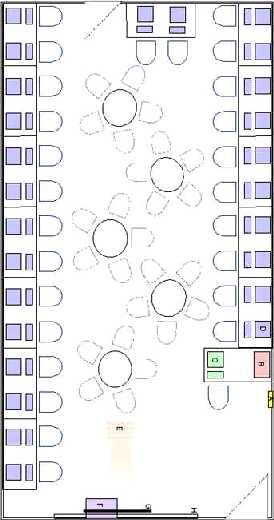When the question of "funding" comes up, administrators raise eyebrows. And they should. There are so many different ways to spend money when it comes to supporting computer-mediated teaching. Teachers, of course, realize that oftentimes training is extremely expensive, both in time and money. Still, it's a must. Support is absolutely necessary to realize an epiphany.
In 1997, the Writing Program at Ball State University realized that to meet the literacy needs of its students a massive rethinking of the tools teachers and students were using had to take place. Inspired by participating in the 1997 Epiphany Institute, the Writing Program Director and her Assistant developed a plan to address the goal of assuring faculty competency in computer-assisted instruction in writing. In fact, several grants--supporting a series of summer institutes, in-semester workshops,and eventually one-on-one consulting--were needed to meet this goal. The original grant proposal, "Teaching Writing for the 21st Century: Moving Toward a Technology-Inclusive English Department," written by Dr. Carole Clark Papper (Director of the Writing Program) and Joel English (then Assistant to the Director) sought funds to design and implement a program of initial training for a "seed group" of seven Writing Program faculty.
In that grant, we defined our primary goal: "to achieve a first, major step toward guaranteeing an English faculty who are adequately knowledgeable about the instructional uses of computer technology, and who are capable of fully integrating this technology into their daily teaching." That first step led (over the next two years) to three more summer institutes, a series of in-semester workshops, an ongoing program of one-on-one peer consulting, a regional K-16 conference on teaching with technology (PPTW), and major changes in ways the Writing Program delivers curricula. When we began, the English Department had two electronic classrooms--one adequate and one marginal at best. Teachers interested in teaching writing with technology had the possible option of one day a week in the computer classroom. Machines were not networked; LAN Daedalus Interchange was about as advanced as we could go. And because only one room could be relied upon to function as needed, we had relatively few teachers interested in seriously and creatively pursuing teaching with technology.
We were fortunate to have the initial support of both our department and college administrations. Subsequent efforts were then able to build upon that successful first effort (summer institute 1997), and eventually result in major changes in the Writing Program, most notably the expansion of our definition of academic literacy to include technological literacy. To achieve the University's goal of introducing all first-year students to multiple academic literacies, we sought funding from the state for 8 new electronic classrooms, and insisted on writing into the grant provision for faculty development and support.
Currently, 73% of all composition courses, some 3200 students every semester, are taught in computer-mediated environments. (The graphic below is an example of some of our classrooms.) This list of funding-related events (from the original epiphany to CW2001) for faculty development demonstrates the chronology of our progress:
- The Epiphany Project
- 1st Grant: George & Francis Ball Foundation Proposal ($10,000)
- 2nd Grant: 21st Century Fund for Faculty Development ($10,000)
- George & Francis Ball Foundation Extended Funding ($5,000)
- 21st Century Fund for Faculty Development Extended Funding ($5,000)
- Writing Program Summer Institute I
- Workshop Series
- 3rd Grant Proposal Submitted
- 21st Century Fund for Faculty Development Extended Funding ($15,000)
- Writing Program Summer Institute II
- Computer Connections Proposal Made to the University (WCLI)
- WCLI Summer Institute I
- 7 New Electronic Classrooms Created
- WCLI Faculty Workshop Series
- WCLI Consulting Service
- WCLI Summer Institute II
- 1 New Electronic Classroom Created (8 Total)
1999, 2000, 2001
- Departmental Showcases, workshops, and consulting
- PPTW (August 1999)
- CW2001 (May 2001)
 January 1997
January 1997
March 1997
30 June thru 11 July 1997
September 1997 thru April 1998
January 1998
March 1998
1-12 June 1998
May 1998
20-31 July 1998
August 1998
September thru December 1998
January thru April 1999
8-18 June 1999